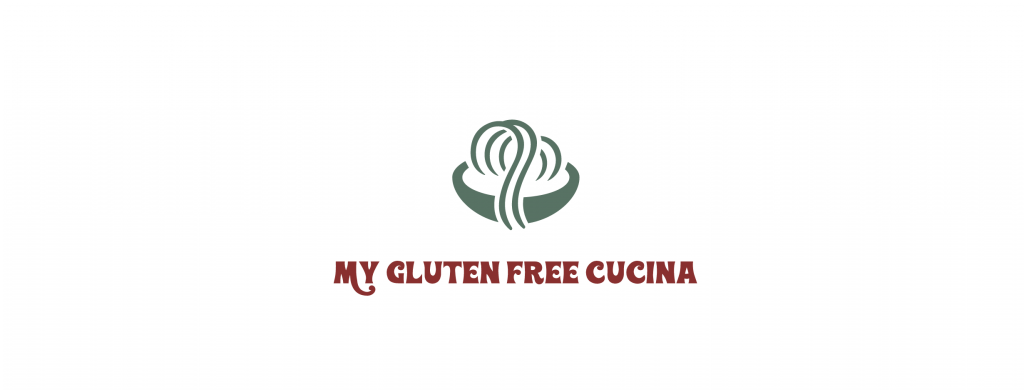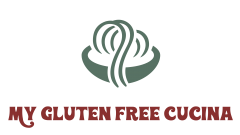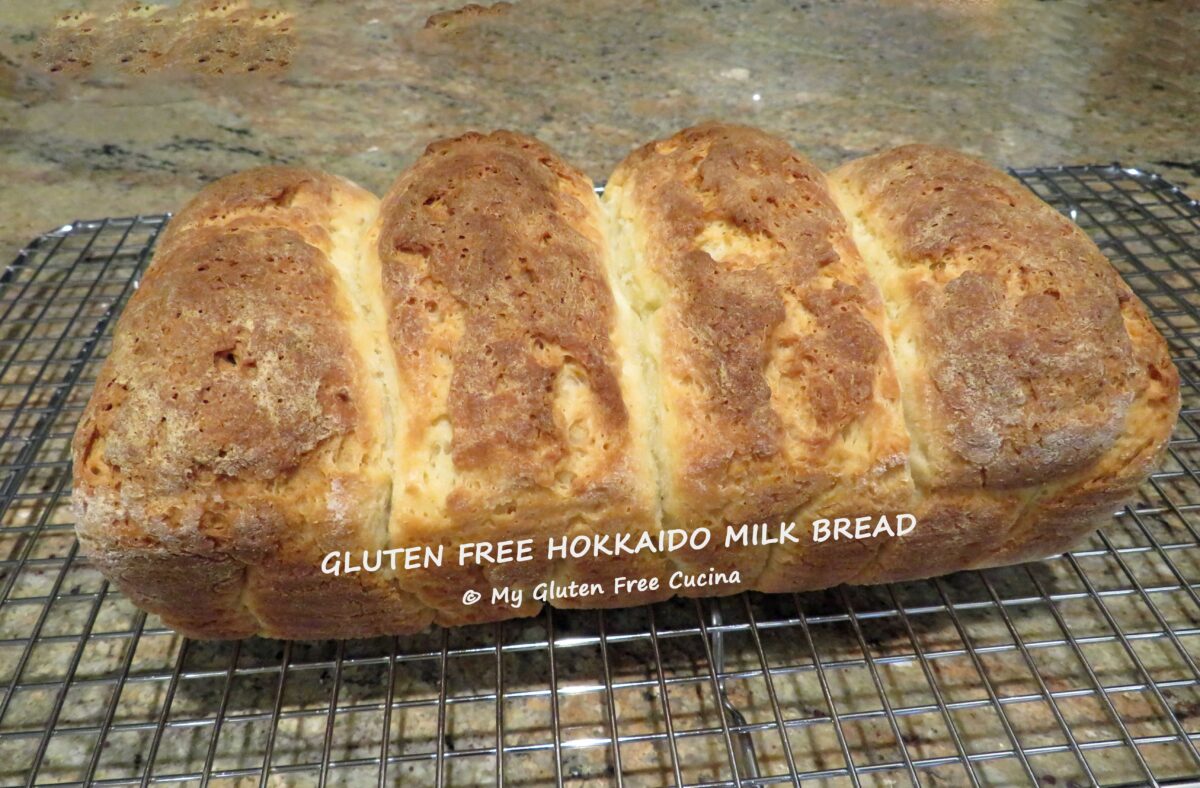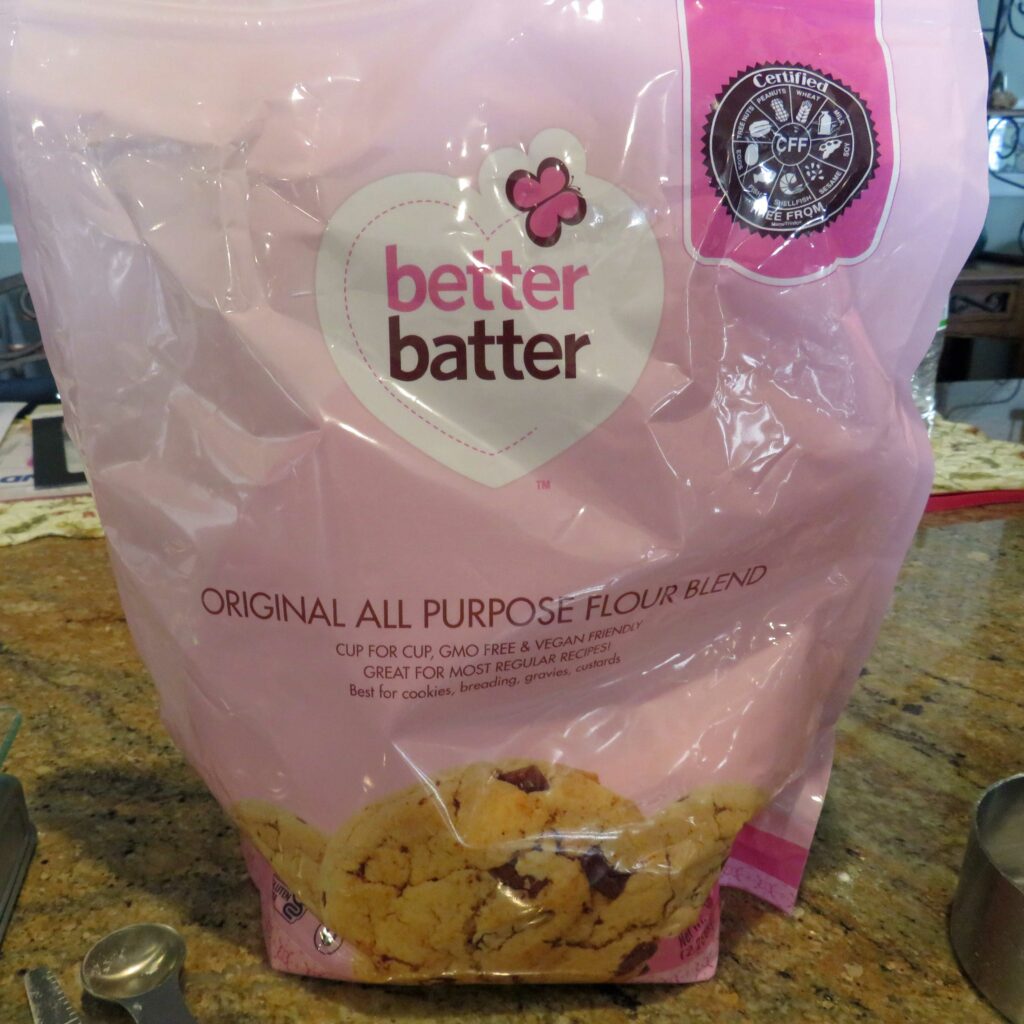Gluten Free Hokkaido Milk Bread, a/k/a Japanese Milk Bread
Hokkaido Milk Bread, a/k/a Japanese Milk Bread is a soft, enriched bread that is great for sandwiches and so much more. The recipe begins with what is called a Tangzhong, a type of rue. Adding this bit of soft paste to the final dough is what gives the bread its fluffy texture.
Back in the day (before Celiac), I loved trying out different bread techniques, and I remember making this bread. Is it even possible to make a gluten free version? I am not exaggerating when I tell you I have been trying for over a year now!
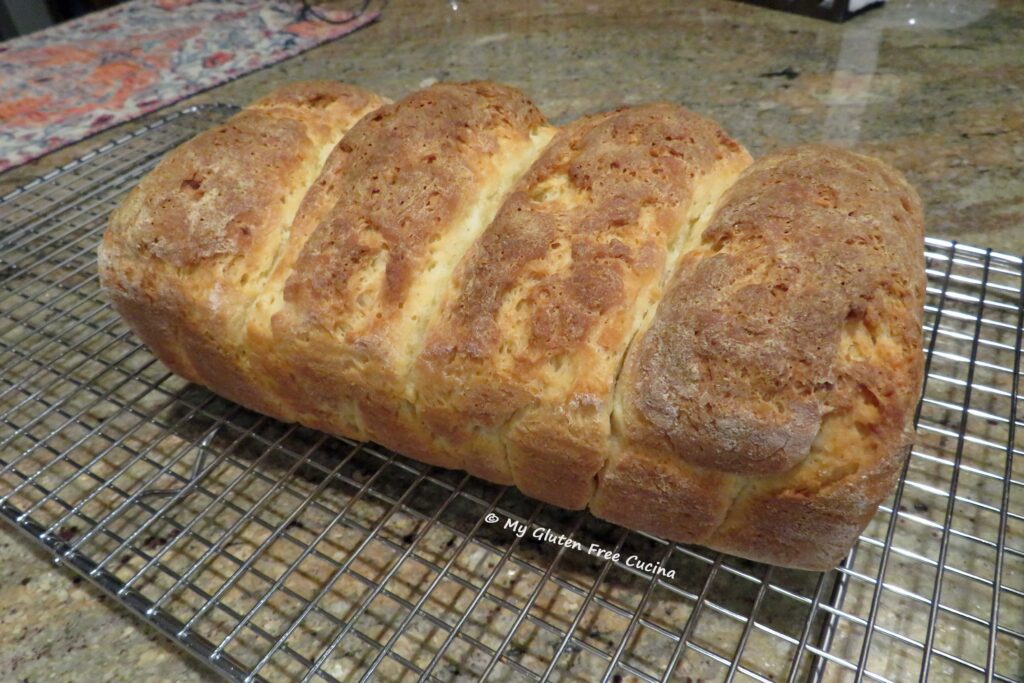
I have tested this bread so many times, with pre-blended flour mixes as well as my own combination of flours and starches. Finding the right flour to liquid ratio was another piece of the puzzle.
As I’m sure you know, gluten free dough has a mind of its own, and there were a lot of failed bakes (that still tasted good) and do-overs that went into this recipe. Every time I test baked, I came a little closer to achieving the texture that I wanted. Special thanks to my favorite chef, Patrick Auger who has been cheering me on and offering advice along the way. Thank you, Patrick, you inspire me!
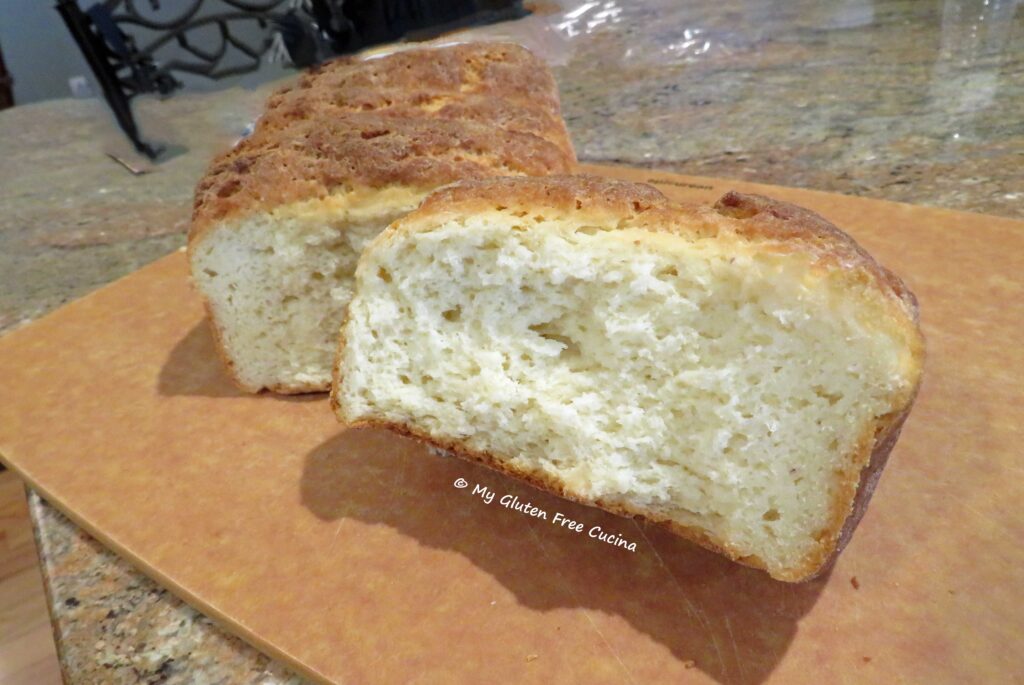
*This recipe was adapted from the King Arthur Baking website. For my adaptation I used Better Batter Original Blend gluten free flour*
This post contains affiliate links.
Ingredients:
Before you get started, know that this is a very fussy bread. For success (and I want you to have success), use a scale to weigh your ingredients.
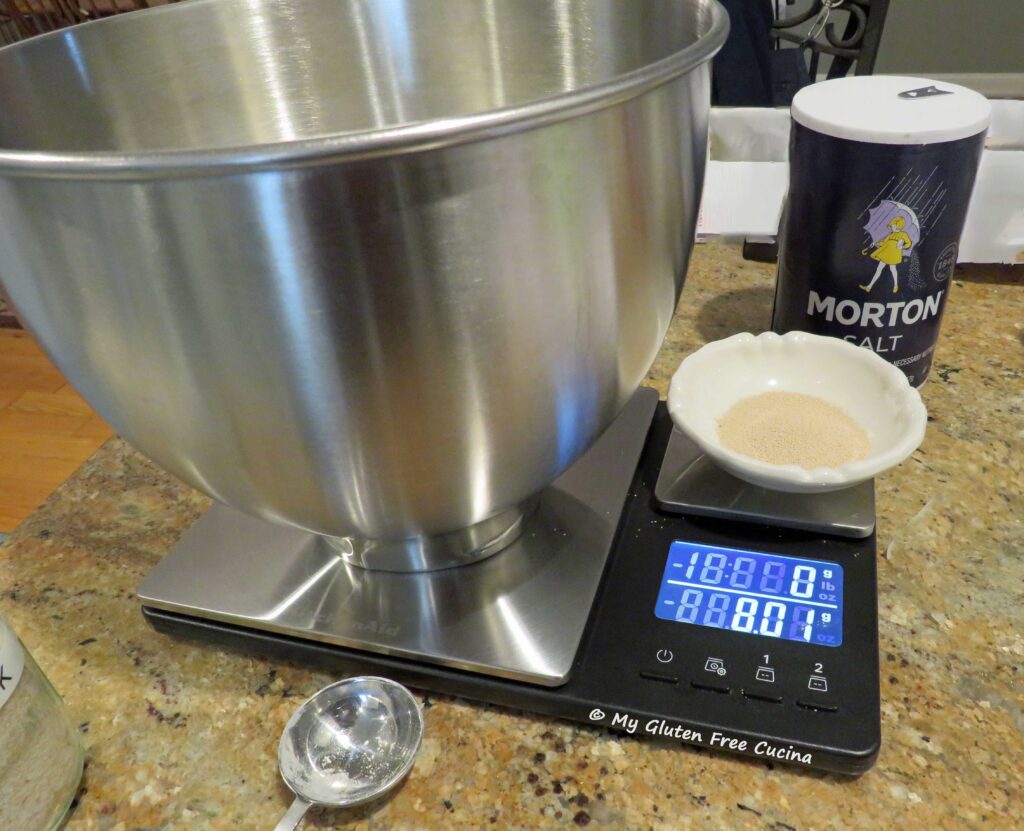
Tangzhong (Rue) Ingredients:
- 26 g. Better Batter Original All Purpose Flour
- 125 g. water (1/2 cup)
Dough Ingredients Dry:
- 420 g. Better Batter Original All Purpose Flour
- 8 g. instant yeast
- 3.3 g. salt
- 1.25 g. cream of tartar
- 50 g. white sugar
- 5 g. whole psyllium husk
Dough Ingredients Wet:
- 1 large egg (50 g.)
- 300 g. milk, warmed 15 seconds in the microwave
- 3 g. apple cider vinegar
- 56 g. unsalted butter (4 tbsp.), melted and cooled
- all of the Tangzhong, cooled
For Finishing:
- 1 tbsp. melted butter
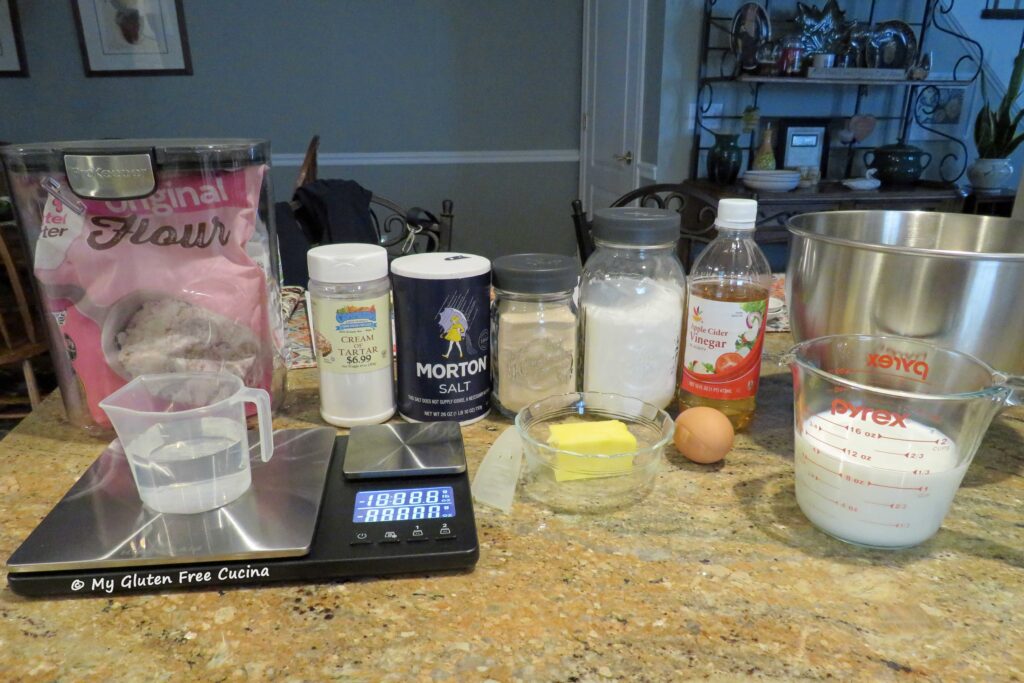
Remember to use my Promo Code MGFC30 for 30% off at Better Batter!
Preparation:
The first step of this recipe is making the Tangzhong. This is a water rue, and I have learned that the weights are very important. Note that with gluten free breads you will almost always need to increase the amount of liquid used in a normal recipe.
Combine the flour and water in a small saucepan. Whisk thoroughly until lumps are gone, then place on the stove over low heat. Continue whisking for at least 5 minutes (don’t walk away!). The mixture will gradually thicken, until it clings to the whisk, like this.

-Set the Tangzhong aside in a bowl to cool while you gather the other ingredients.
-Next melt the butter, so it has time to cool down.
-Weigh and combine all of the dry ingredients in the bowl of a stand mixer and whisk together thoroughly.
-When your melted butter and Tangzhong have cooled to room temperature, whisk them together with the other wet ingredients.
-Add the wet ingredients to the dry and mix on lowest speed for 30 seconds or so to incorporate.
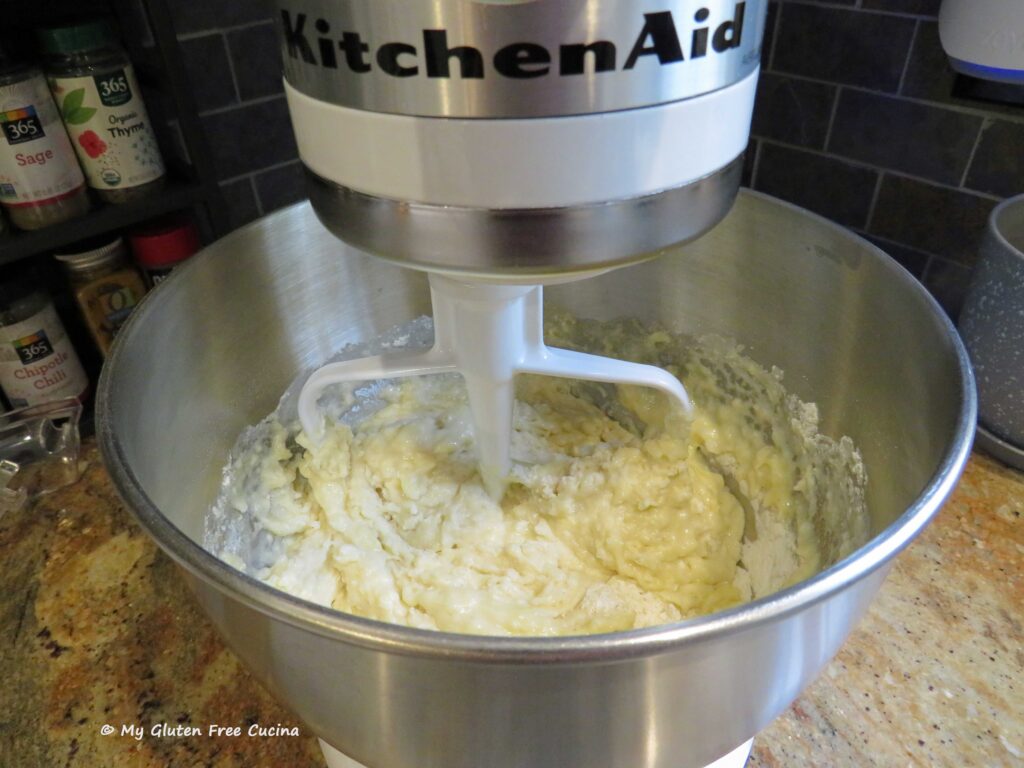
When everything is moistened, increase speed and mix with the paddle attachment for 15 minutes to form a smooth supple dough.
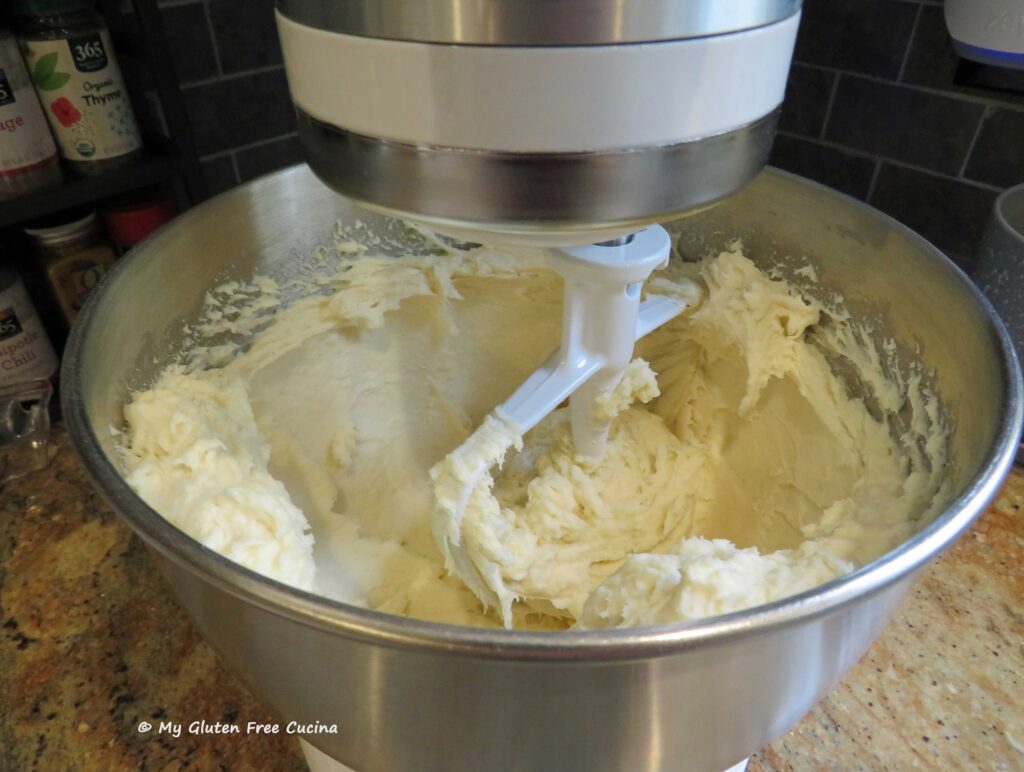
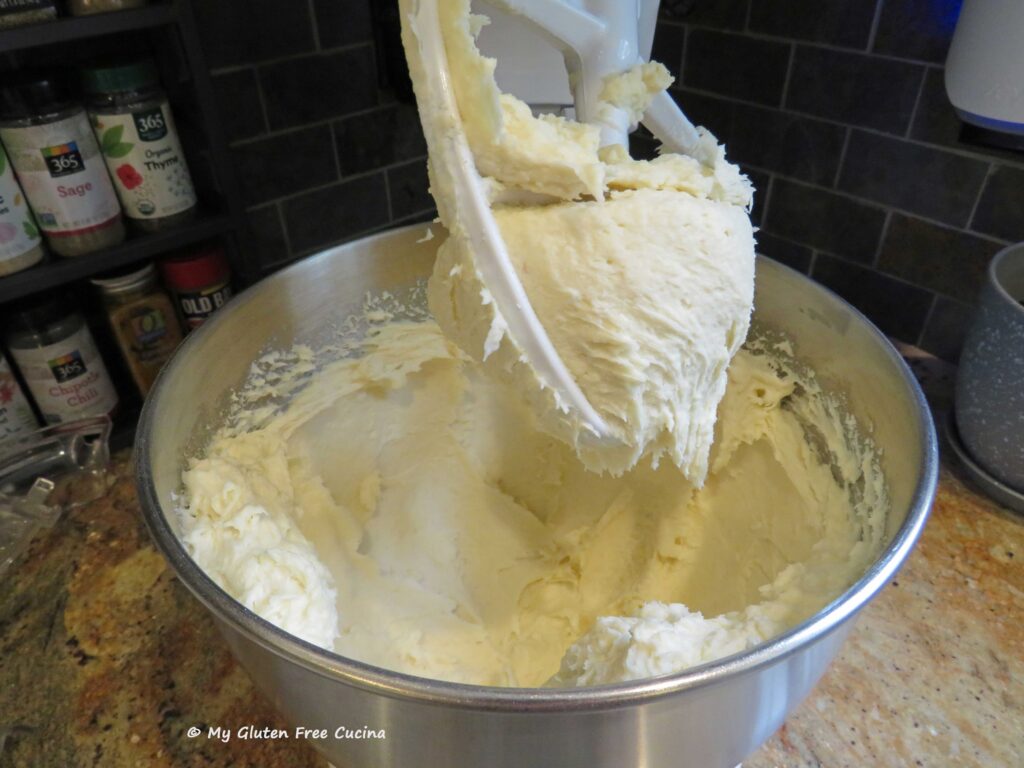
Scrape the dough down, cover and let it rest for 20 minutes.
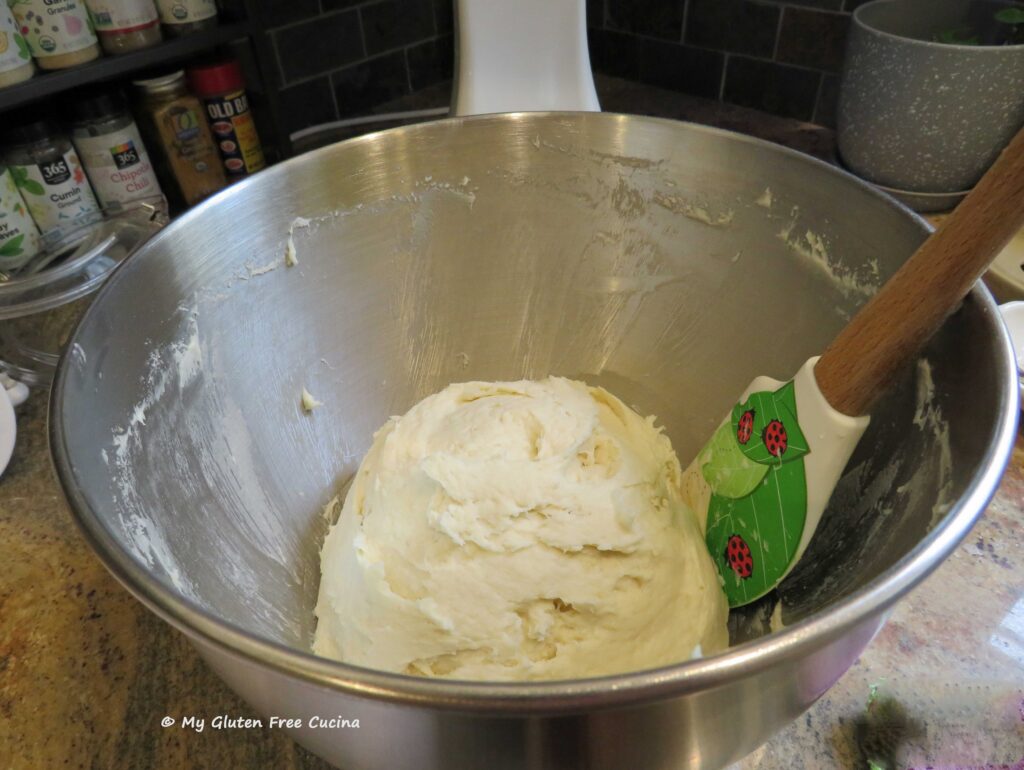
For my fellow perfectionists, now is a good time to get a total weight on your dough. Place an empty bowl on the scale, tare it and add the whole dough ball. Why? So that when you divide it into 4 sections, you will know that they are of equal weight.
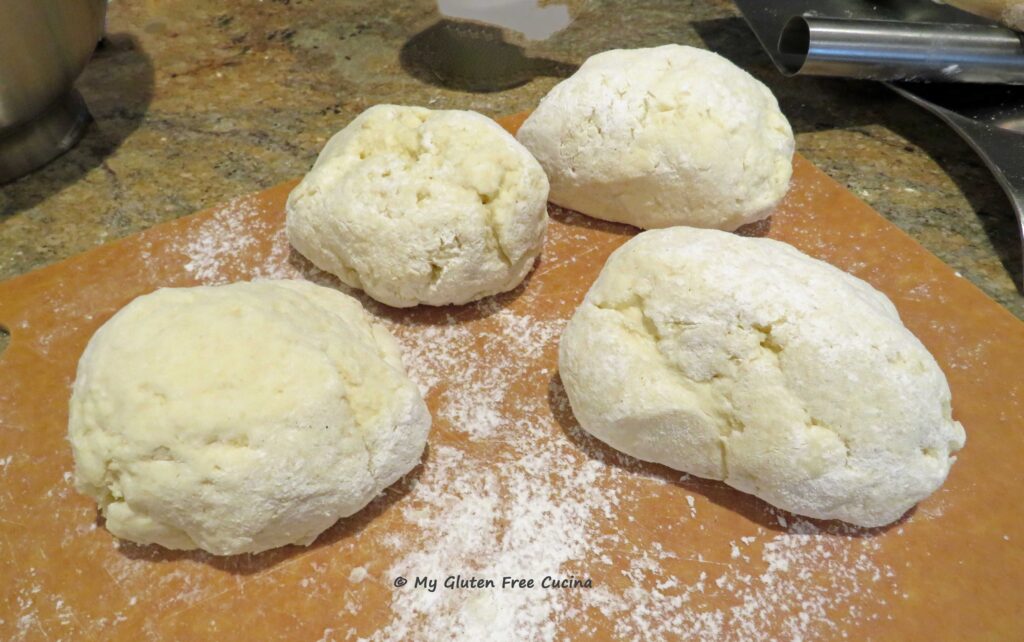
My total dough weight was 1000g. and I divided it into 4 sections of 250g. each. Place the four pieces on a floured cutting board and pat them lightly with flour.
Then, working with one piece at a time, roll into a rectangle, about 4 x 6″.
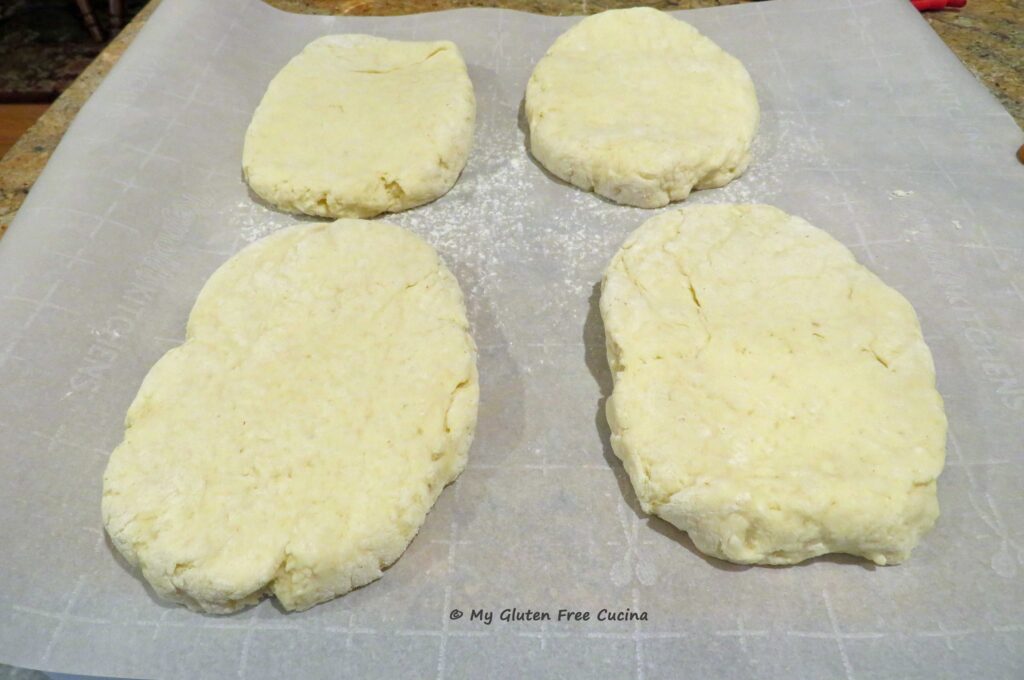
Gently fold each piece in half, then place side by side in a 9 x 5 (1.25 lb.) loaf pan with the folded side facing up. I lined the pan with parchment and misted with cooking spray. This made it easier to lift out the finished loaf.
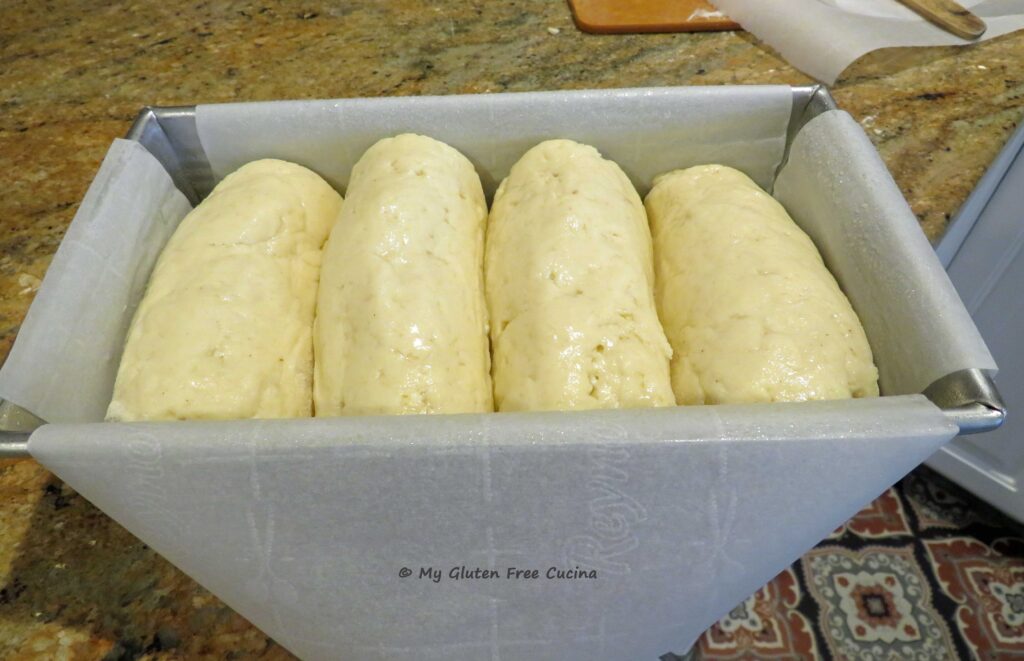
Note that in traditional Hokkaido milk bread recipes, the sections of dough are folded over several times and rolled into a cylinder. I found that this caused more breakage and separations in the dough, so I modified this step by just folding the pieces in half. It was much easier and did not affect the finished loaf.
Spray the top of the loaf liberally with warm water and use a spatula to smooth any cracks in the dough. Cover and proof in a warm place until the dough has risen to just below the rim of the pan, about 40 minutes (I used my proofing box, set to 80º).
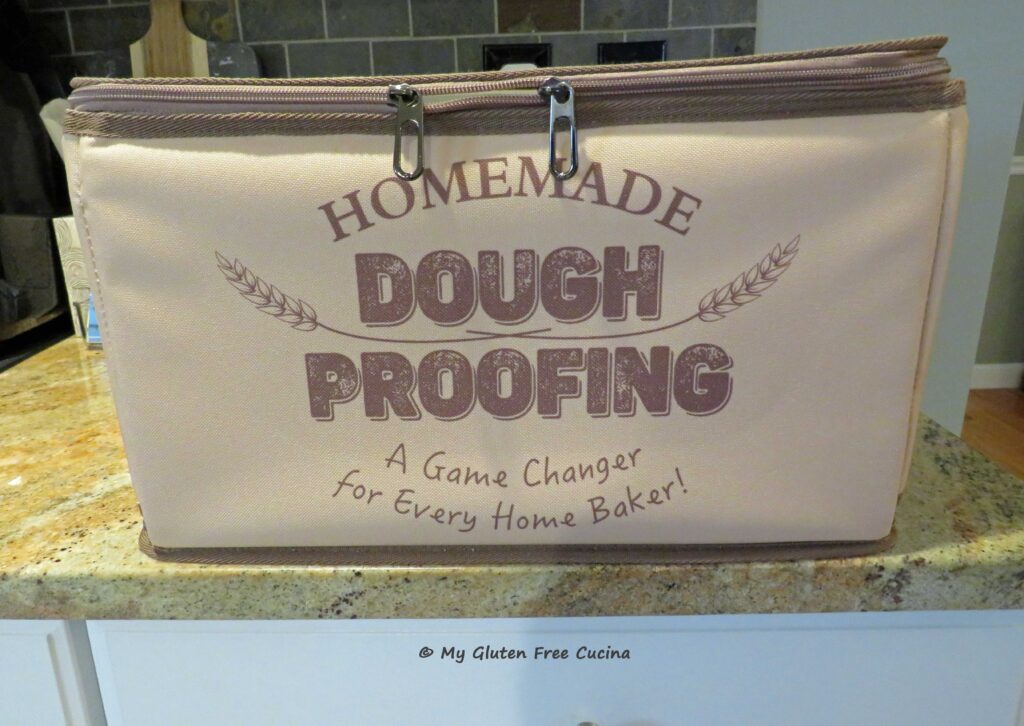
Preheat the oven to 350º with a baking stone set on the middle rack.
Before baking, brush 2 tbsp. melted butter over the top of the loaf.
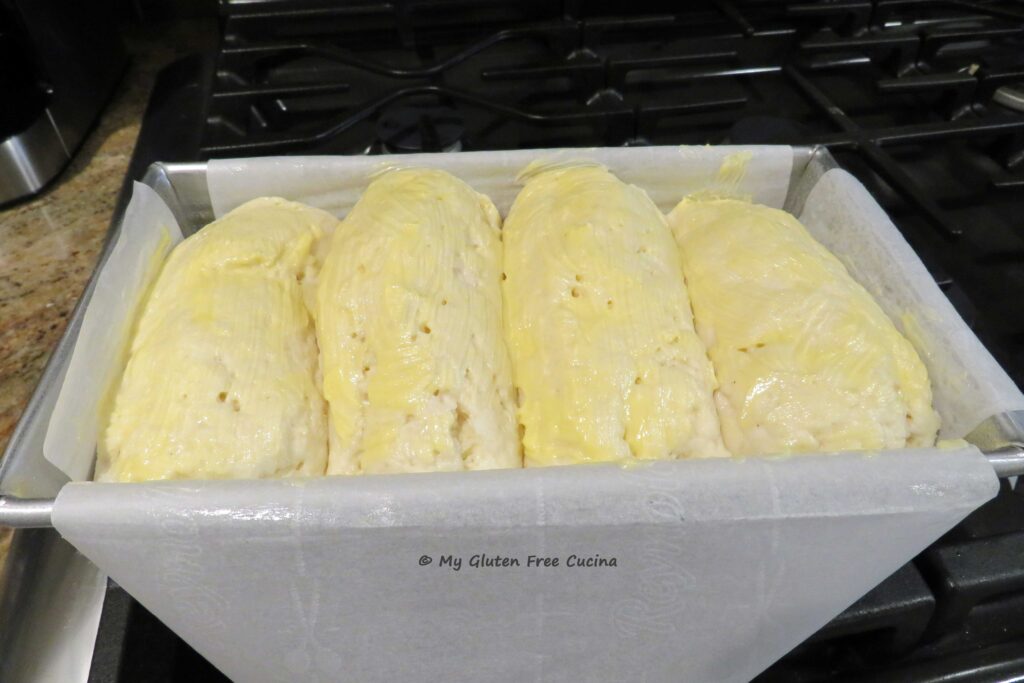 Place it on the center rack and throw a few ice cubes onto the bottom of the oven. Bake for 45 minutes, or until the internal temperature reaches 190º.
Place it on the center rack and throw a few ice cubes onto the bottom of the oven. Bake for 45 minutes, or until the internal temperature reaches 190º.
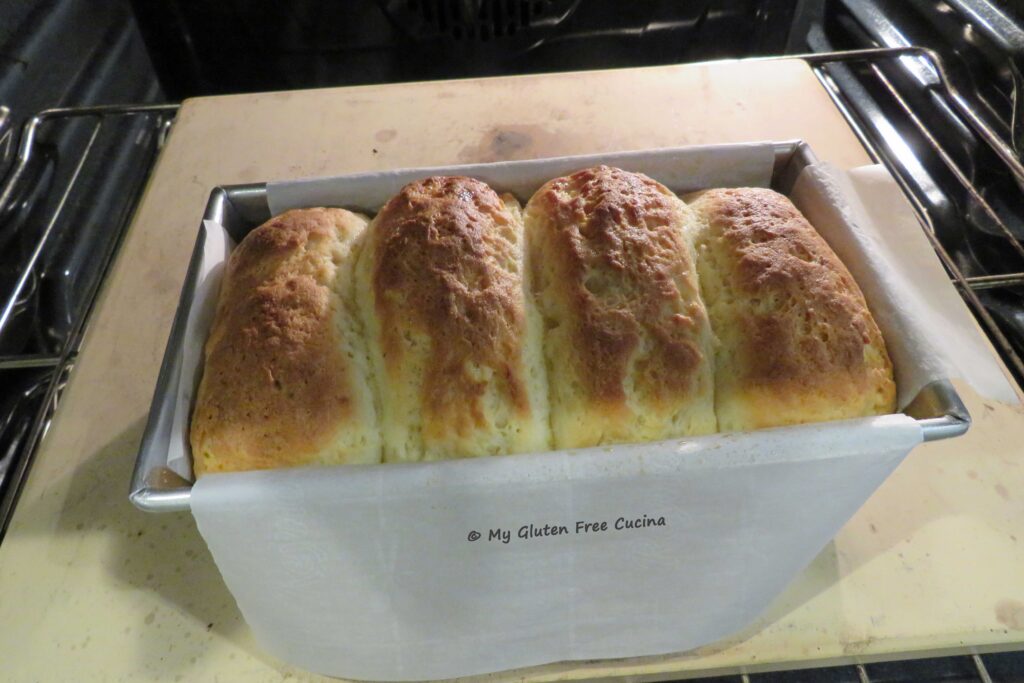
Grasp the parchment and lift the loaf out of the pan. Remove the parchment and bake directly on the stone for 10 minutes longer.
Remove from the oven and let the loaf cool to room temperature. When cooled, cover and let it rest, ideally for 18-24 hours. Now is the time to admire your work (and maybe take care of the cleanup)!
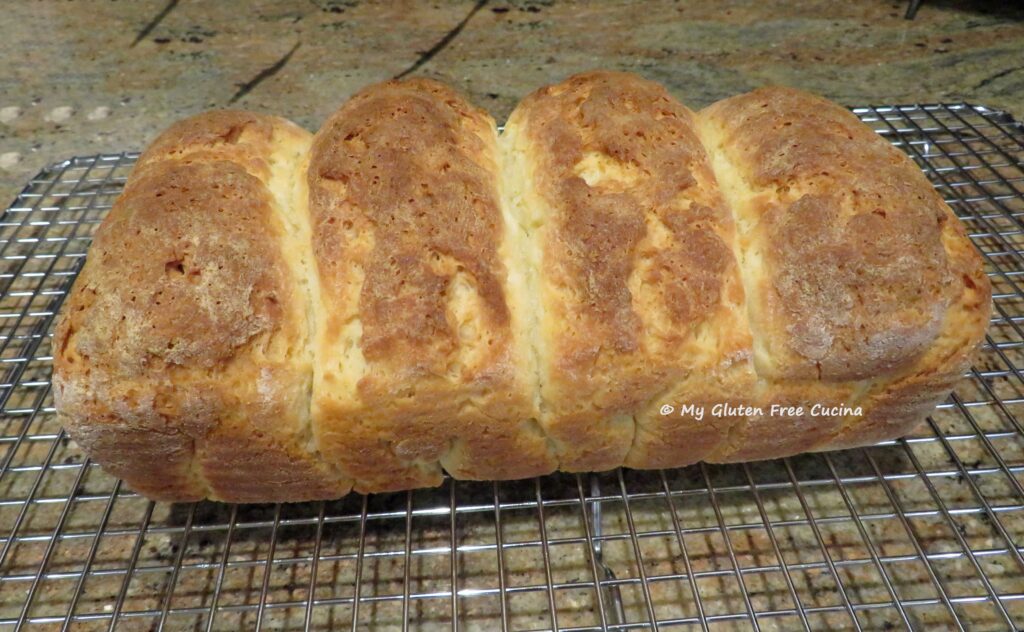
I placed mine in a plastic bag overnight and sliced it up in the morning.
It was well worth the wait. See that fluffy crumb? No gummy texture here, that’s exactly what I wanted!
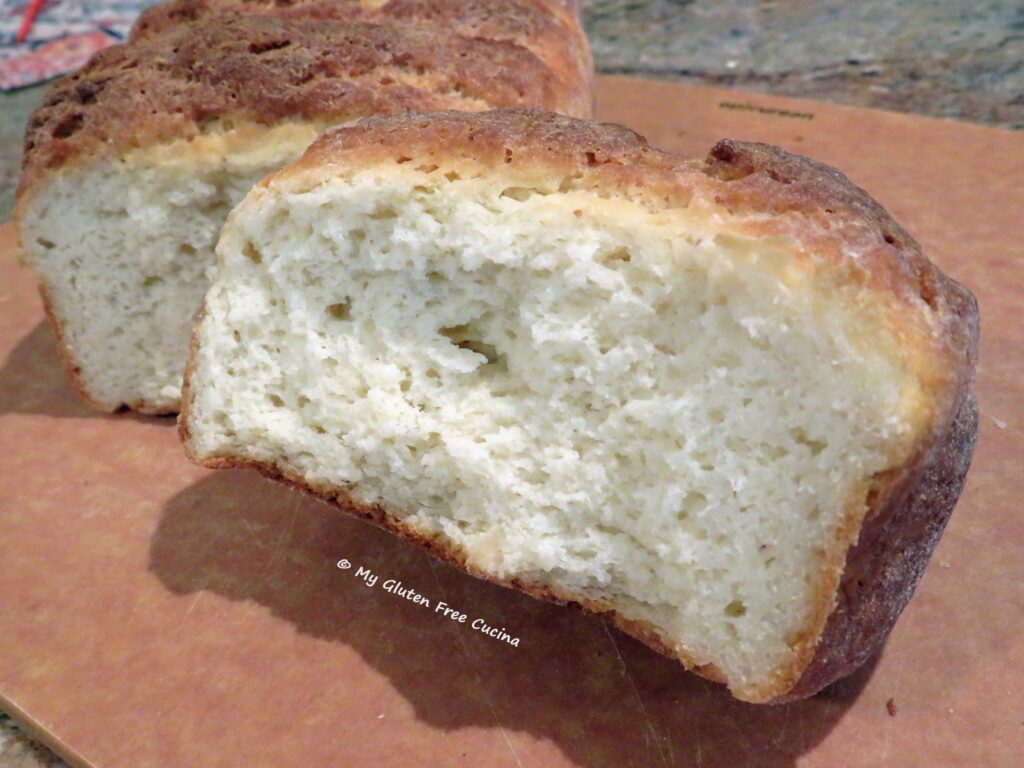
This will be a great sandwich bread and don’t get me started on French toast!
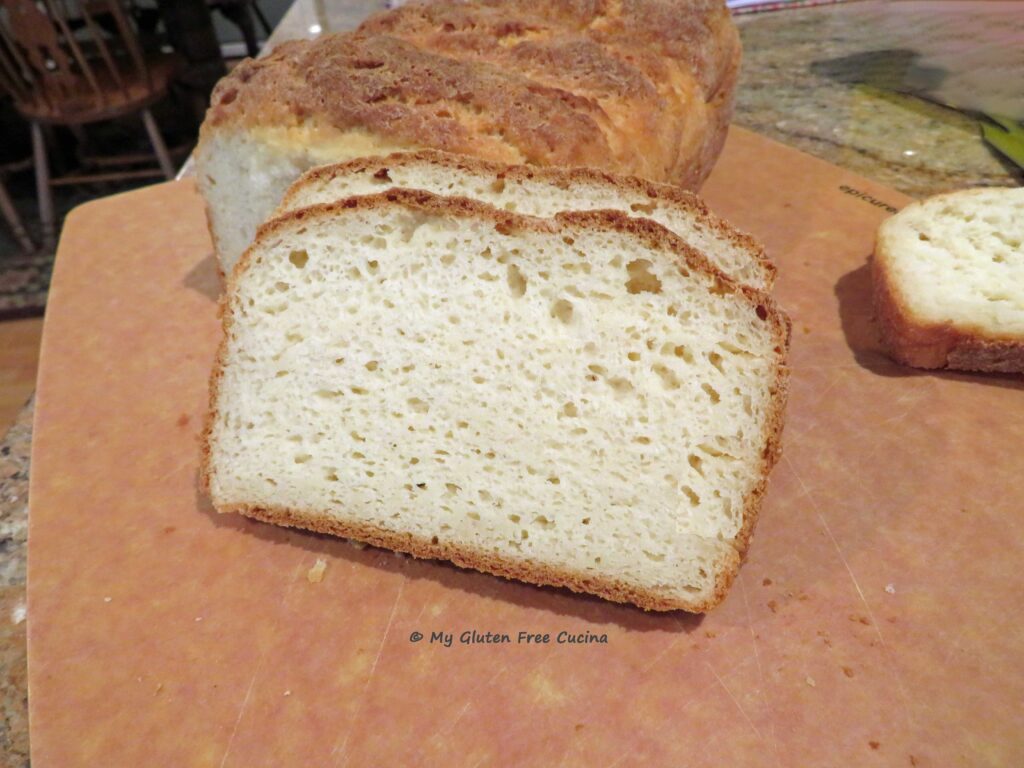
Notes ♪♫ As I studied traditional recipes for Hokkaido Milk Bread, I dreamt of my gluten free adaption having the smooth, pillow like top that you see in pictures from recipes made with wheat flour. The truth is gluten free dough doesn’t have the elasticity to stretch like that. There are going be cracks and craters in the surface of the dough. When I finally accepted that and concentrated on getting the right crumb, I began to make progress. There are so many factors that go into a good loaf of gluten free bread. Ingredients, technique, temperature, pan size just to name a few. I hope this post inspires you to keep trying and never give up!
